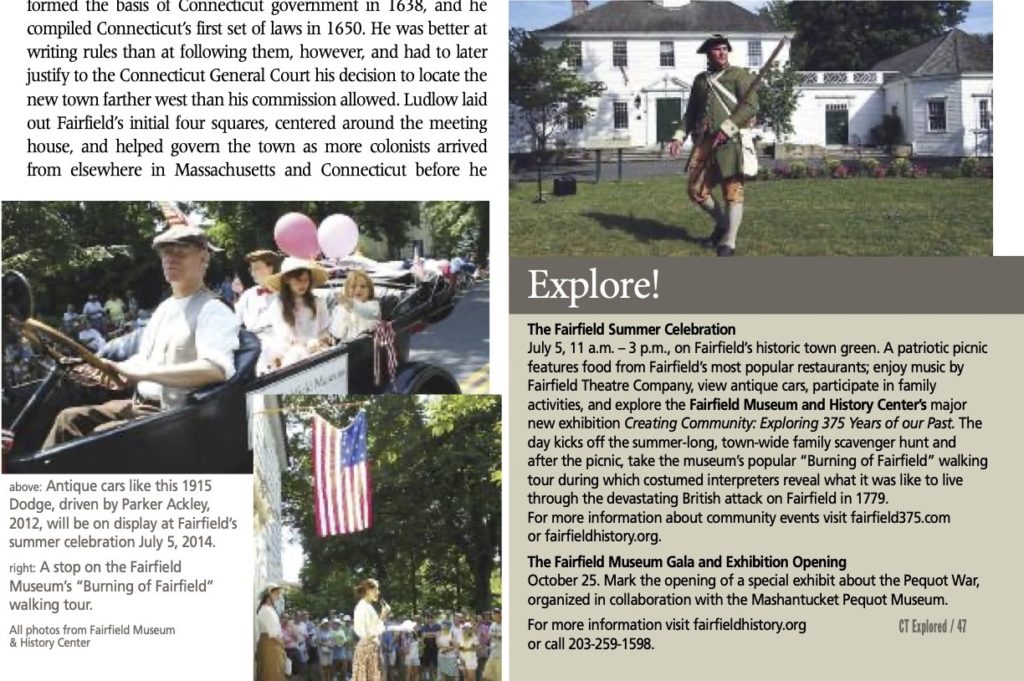By Elizabeth Rose
(c) Connecticut Explored Inc. Summer 2014
Subscribe/Buy the Issue!
How does one of Connecticut’s oldest towns celebrate its 375th birthday?
Fairfield was founded as a direct result of the Pequot War. New England’s first total war against native peoples, that conflict established the dominance of English colonists in the region, making it possible for them to move into formerly native territory and build new towns along Connecticut’s coast. That same year, Guilford, Milford, and Stratford were founded, too. (See page 44.)
In 1639, two years after fighting in the final battle against the Pequot, colonial leader Roger Ludlow left his home in Windsor and returned to the area to start a settlement with a few other families. From his wartime expedition in 1637, Ludlow may have remembered the acres of open fields cleared by local Paugussett Indians, which made the area an appealing location for farming. As deputy governor of the Connecticut colony, he also wanted to stake a claim to the area before the New Haven colony, founded in 1638, did.
Ludlow, the only trained lawyer living in the Connecticut colony during its early years, drafted the Fundamental Orders that formed the basis of Connecticut government in 1638, and he compiled Connecticut’s first set of laws in 1650. He was better at writing rules than at following them, however, and had to later justify to the Connecticut General Court his decision to locate the new town farther west than his commission allowed. Ludlow laid out Fairfield’s initial four squares, centered around the meeting house, and helped govern the town as more colonists arrived from elsewhere in Massachusetts and Connecticut before he joined other Puritans in returning to England after the civil war there resulted in a Puritan-dominated government. He was appointed commissioner for the administration of justice at Dublin, and probably died in 1665-1666 in Dublin.
In the past 375 years, Fairfield has grown from an outpost of nine households to a town of almost 60,000 residents and from a Puritan settlement to a suburban enclave. Its prominence as a county seat and center of trade in the 1700s made it a target of attack during the American Revolution, when the British burned the town in 1779. Retaining a quiet country atmosphere, Fairfield became a popular destination for wealthy city dwellers in the 19th century, and an attractive suburban locale in the 20th.
Explore!
“Revolutionary War: Fairfield Set Ablaze,” Spring 2009
“Accused! Fairfield’s Witch Trials,” Fall 2016

